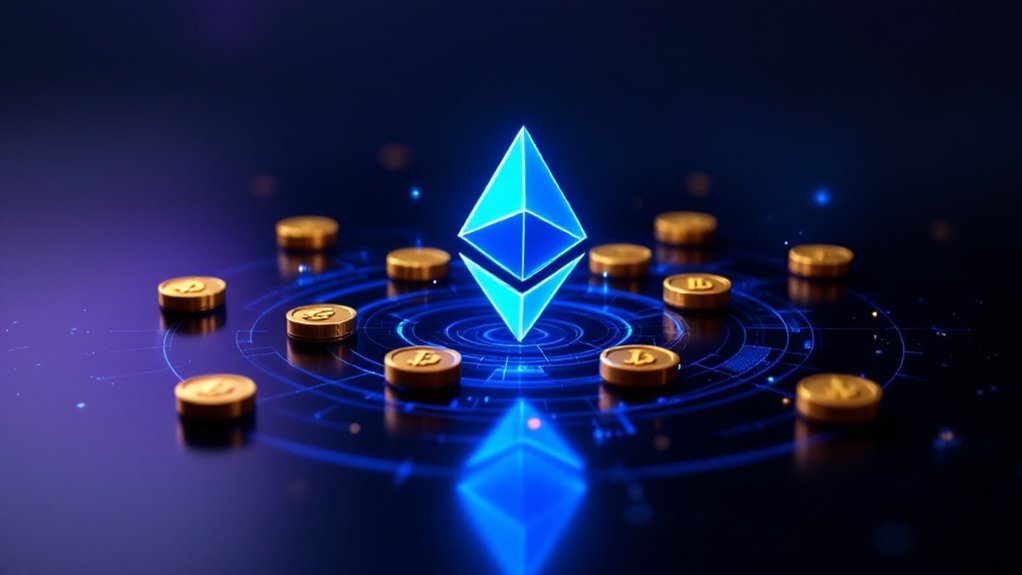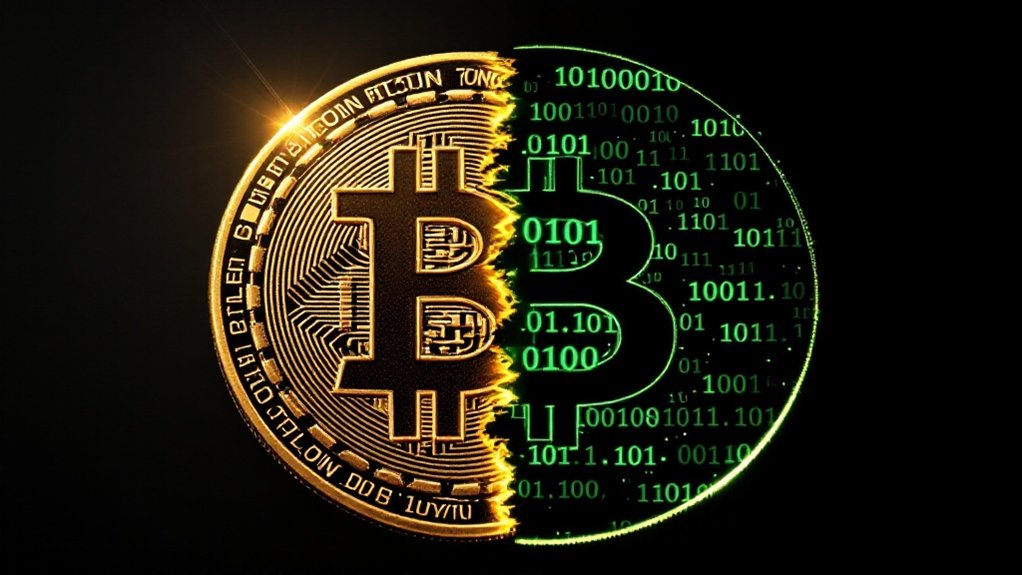ERC-20 tokens represent the standard protocol for fungible tokens on Ethereum, defined by six mandatory functions including transfer() and balanceOf(). Introduced in 2015, these tokens serve as cryptocurrencies, utility tokens, governance mechanisms, and asset representations. Despite limitations like potential token loss and high gas fees during congestion, ERC-20 remains relevant through integration with layer-2 solutions and cross-chain compatibility. The standard continues evolving while maintaining the established infrastructure that powers thousands of blockchain applications.

While blockchain technology continues to evolve rapidly, the ERC-20 token standard remains a cornerstone of the Ethereum ecosystem. Introduced in 2015 and widely adopted by 2017, this technical standard establishes common rules for fungible tokens on the Ethereum blockchain. It defines a set of functions and events that guarantee compatibility across various platforms and applications, enabling seamless integration with exchanges, wallets, and other decentralized services.
The ERC-20 standard requires implementation of six mandatory functions: transfer), approve(), transferFrom(), balanceOf), totalSupply), and allowance(). These functions facilitate the movement of tokens between addresses and provide essential information about token supply and ownership. Additionally, the standard recommends two optional functions—name() and symbol()—which help identify the token. When properly implemented, these functions allow tokens to be transferred, tracked, and managed consistently across the Ethereum network.
Developers must adhere to specific data types and structures as outlined in EIP-20 (Ethereum Improvement Proposal 20) specifications. The standard also requires the emission of Transfer and Approval events, enabling applications to track token movements efficiently. These technical requirements create a framework that balances flexibility with standardization, allowing for innovation while maintaining interoperability. Similar to other alternative cryptocurrencies, ERC-20 tokens enhance the overall digital asset ecosystem by providing specialized functionalities.
ERC-20 tokens serve diverse purposes within the blockchain ecosystem. They function as cryptocurrencies, utility tokens for accessing services, governance mechanisms for decentralized autonomous organizations, and representations of real-world assets. Major stablecoins like USDT and USDC utilize this standard, demonstrating its versatility and reliability in high-value applications. The concept was originally envisioned by Nick Szabo in the 1990s, long before blockchain technology existed in its current form. ERC-20 tokens can be used to represent physical commodities like gold, making them valuable tools for asset tokenization in traditional markets.
ERC-20’s versatility enables everything from cryptocurrencies to governance tokens, powering major stablecoins and decentralized applications alike.
Despite its widespread adoption, the ERC-20 standard has limitations. Users occasionally experience token loss during contract interactions, and transactions can become expensive during network congestion. The standard also lacks built-in recovery mechanisms for tokens sent to incorrect addresses. These challenges have prompted ongoing development efforts to improve the standard’s functionality and security.
As blockchain technology advances, ERC-20 continues to evolve. Integration with layer-2 scaling solutions addresses transaction cost concerns, while cross-chain compatibility efforts expand token utility beyond the Ethereum ecosystem. Additionally, developers are exploring improved security features to mitigate vulnerabilities in smart contract implementations.
Despite newer token standards emerging, ERC-20’s established infrastructure maintains its continued relevance in the blockchain landscape through 2025 and beyond.
Frequently Asked Questions
Can ERC-20 Tokens Be Converted Back to Ethereum?
Yes, ERC-20 tokens can be converted to Ethereum (ETH).
This conversion occurs through decentralized exchanges like Uniswap or centralized platforms that support ERC-20/ETH trading pairs. The process involves interacting with smart contracts that facilitate the exchange.
Conversion rates fluctuate based on market demand and liquidity. Users should consider potential slippage and gas fees when converting tokens. The transaction requires ETH for gas regardless of conversion direction.
What Security Vulnerabilities Are Common in ERC-20 Smart Contracts?
ERC-20 tokens commonly face several critical security vulnerabilities.
Integer overflow/underflow attacks can manipulate token supply through arithmetic operations exceeding data type limits.
Reentrancy vulnerabilities allow attackers to drain funds by making recursive calls before state changes complete.
Approval race conditions enable double-spending through front-running.
Centralization risks arise from privileged owner functions that can control token behaviors.
Implementation of SafeMath libraries, ReentrancyGuard, improved approval mechanisms, and decentralized governance structures mitigate these threats.
How Do ERC-20 Tokens Impact Ethereum Network Congestion?
ERC-20 tokens significantly contribute to Ethereum network congestion. Each token transaction consumes gas and competes for limited block space.
During periods of high activity, such as token launches or major DeFi events, the network experiences increased transaction volume. This surge in demand raises gas fees for all users and extends confirmation times.
The scalability limitations of Ethereum’s current architecture further compound these congestion issues, necessitating solutions like Layer 2 protocols and sharding implementations.
Are ERC-20 Tokens Legally Considered Securities?
The legal classification of ERC-20 tokens varies case-by-case, though many are considered securities under the Howey Test.
SEC Chairman has indicated most ICO tokens qualify as securities. Some utility tokens may avoid this classification if they don’t represent investment opportunities.
Regulatory determinations examine the token’s economic reality rather than technical structure.
International jurisdictions like the EU, UK, and Singapore have developed their own classification frameworks for digital assets.
Can Quantum Computing Threaten ERC-20 Token Security?
Quantum computing poses a significant threat to ERC-20 token security by potentially breaking ECDSA cryptography used in Ethereum.
Public keys exposed during transactions are particularly vulnerable, with over 65% of Ether currently in quantum-exposed addresses.
While current quantum computers lack sufficient qubits to execute successful attacks, experts anticipate viable threats within 15 years.
The blockchain community is actively developing mitigation strategies including post-quantum cryptography algorithms and quantum-resistant smart contracts.
References
- https://www.rapidinnovation.io/post/what-is-erc-20
- https://tanger-dentiste.com/understanding-erc-20-tokens-and-their-use-cases/
- https://coinloan.io/blog/guide-to-erc-20-tokens/
- https://softnote.com/blog/what-are-the-erc20-tokens-list-of-erc20-tokens-in-2025
- https://sdlccorp.com/post/use-cases-of-erc-20-tokens-exploring-their-versatility-and-impact/
- https://www.investopedia.com/news/what-erc20-and-what-does-it-mean-ethereum/
- https://coinranking.com/coins/erc-20
- https://www.chainalysis.com/blog/introduction-to-erc-20-tokens/
- https://www.calibraint.com/blog/the-complete-guide-to-erc20-tokens
- https://www.webopedia.com/crypto/learn/erc-token-standards-complete-guide/





